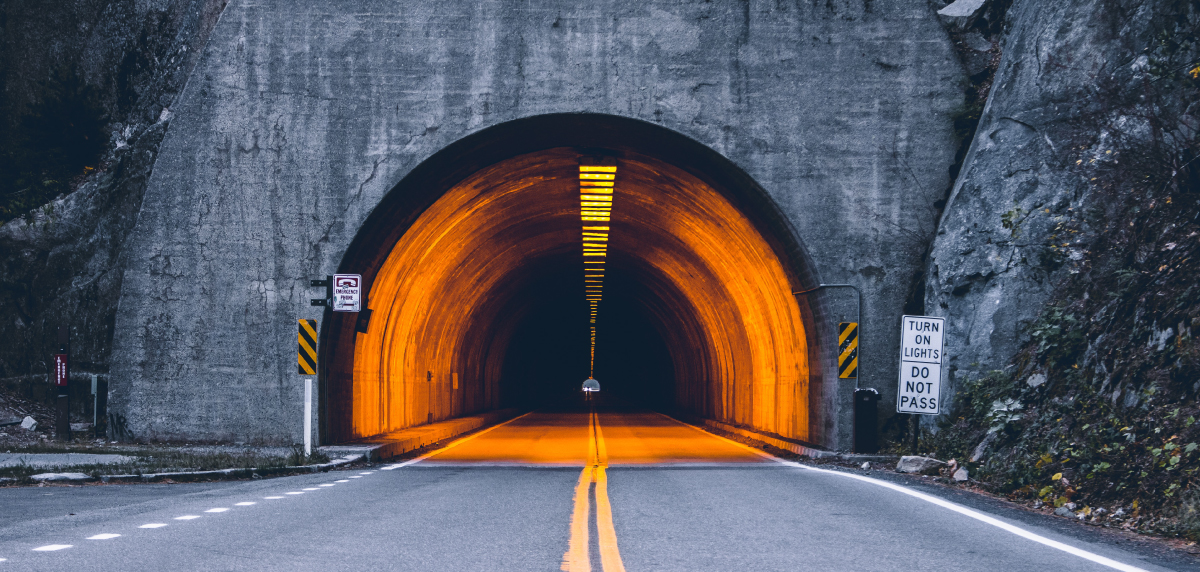Ventilation is one of the main issues concerning the construction or maintenance of a road tunnel. Although the criteria for tunnel ventilation and road tunnel maintenance may vary from country to country, tunnel ventilation is never left to chance. Generally speaking, tunnels shorter than 500m don’t require a tunnel ventilation system.
Since no tunnel is like the other, the ventilation systems’ design and dimensions may vary from project to project. In this article, we’ll discuss different options for tunnel ventilation systems and how process automation and engineering solutions can make them more effective.
Tunnel Ventilation System Design
A ventilation system’s design is defined by a set of criteria with the unique needs of each case. Yet, three core criteria must be observed in any project to guarantee the safety performance of the entire system for drivers and road workers.
In-Tunnel Air Quality
The in-tunnel air quality is measured by carbon monoxide and nitrogen dioxide volumes. The air quality here also affects visibility conditions inside the tunnel as the vehicles’ emissions build up. Typically, these systems use automated equipment overseen by trained engineers and technicians.
System Capacity
The dimensioning and type of equipment used in a ventilation system must be adequate to keep a low level of such gases along the tunnel. The calculation of the capacity of a ventilation system usually takes into account the first year of functioning. It’s so because the first year of a tunnel functioning is usually the one with higher emissions. Not only are more drivers expected to pass through it in the first year, but also because vehicles are likely to improve their emission rates as auto technology improves.
Ambient Air Quality
Pollution levels tend to be higher nearby tunnel entrances. That’s why a tunnel project can’t focus only on the air quality inside of it. It also needs to deal with the air quality at its exits and entrances. Solutions typically include installing exhaust fans on dedicated stacks or near the portals, dispersing the pollutants that build up around them.

Other Criteria
Sometimes, the project has a zero-emissions target at the portals, which requires top-quality engineering solutions. The piston effect must be neutralised, and all the vitiated air must be extracted via elevated ventilation.
Why Do Ventilation Systems Matter?
An efficient ventilation system is a mandatory part of any tunnel project longer than 500m. The air quality inside tunnels must be carefully maintained. Otherwise, it threatens the health of road workers and drivers. Additionally, the vitiated air inside the tunnel affects the portal’s surroundings.
It’s up to the ventilation system to prevent the accumulation of fumes inside the tunnel. The accumulation of fumes impairs the visibility of drivers, which is a threat to everyone driving or working there. So, an efficient ventilation system ensures the health and safety of users and protects the environment around it.
Ventilation systems can employ air-blowing equipment, such as jet fans and exhaust fans. Longitudinal ventilation uses only air-blowing equipment, as the piston effect takes care of the rest. Tunnels with transverse ventilation typically use a combination of this equipment to keep a constant flow of fresh air inside the tunnel while extracting vitiated air.
Dimensioning of Road Tunnel Ventilation Systems
The dimensioning of road tunnel ventilation systems depends on several factors, such as tunnel length, traffic expectations, environmental issues and acceptable levels of certain gases inside and outside the tunnel. In any case, the equipment used in the project should withstand normal conditions and extreme cases like fire, exceptionally heavy traffic and weather.
Mechanical ventilation systems usually require a certain degree of industrial automation of their parts for more efficiency. Additionally, mechanical ventilation requires regular system maintenance and solid program management. However, calculations may differ between longitudinal and transverse systems. Let’s have a look at those differences below.
Longitudinal Systems
In longitudinal systems, the dimensioning of the ventilation equipment has to do with the necessary thrust for nozzles and jet fans. Here, jet fans are positioned along the tunnel, starting from its entrance to accelerate its airflow. Longitudinal ventilation also uses the “piston effect” caused by vehicles inside the tunnel to help the vitiated air out.

The “piston effect” happens both in unidirectional and multidirectional tunnels. However, the piston effect is considerably weaker in the latter. That’s why bidirectional tunnels need additional ventilation equipment and complete engineering solutions to ensure acceptable levels of air quality inside the tunnel and near its entrances. Quite often, bidirectional tunnels employ transverse or semi-transverse systems.
Transverse Systems
While planning a transverse ventilation system, one needs to consider the size of the supply ducts and exhaust to ensure the airflow for each scenario. Additionally, it’s necessary to consider the electrical power and pressure required for the project.

Transverse and semi-transverse systems can handle bidirectional traffic and also traffic congestion. The main difference between transverse and semi-transverse systems is the amount of air they can renew. Transverse systems perform the complete exchange of air inside the tunnel. Semi-transverse systems renew only part of it, although with higher exhaust capacity.

Tunnel Ventilation Systems From Premel
Premel is a Swiss company with 75 years of expertise and proven excellence in various areas, including tunnel ventilation systems. It can be attested through its best quality policy which follows ISO 9001 standards strictly. Premel stands out as one the main global companies providing industrial service and maintenance for the most varied construction projects. Unsurprisingly, Premel has become one of the top industrial equipment suppliers for tunnel ventilation systems.
For 75 years, Premel has not only provided high-quality products and smart engineering solutions in a true partnership with its clients. Today, Premel is a leader in the management services engineering industries, providing applied engineering solutions and a vast pool of professionals, from environmental engineers and power engineering to general electromechanical equipment suppliers.
Here, you’ll find everything you need for all the technological successes of your tunnel ventilation design and dimensioning projects. You can learn more about Tunnel Ventilations from Premel.
